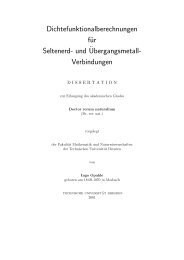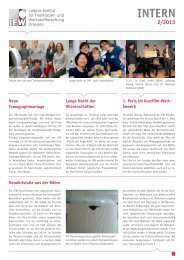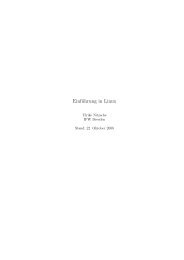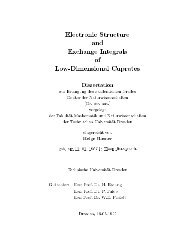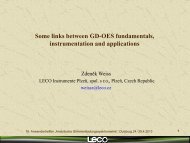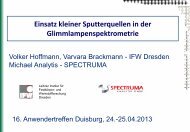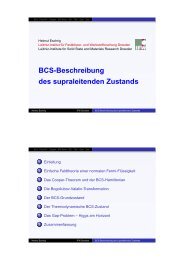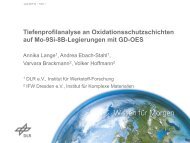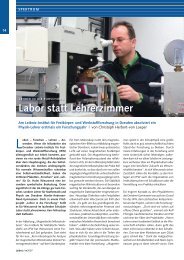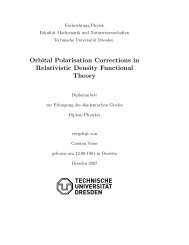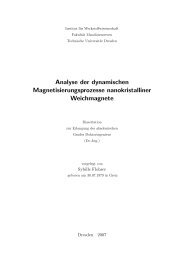ALBERTO BOLLERO REAL
ALBERTO BOLLERO REAL
ALBERTO BOLLERO REAL
You also want an ePaper? Increase the reach of your titles
YUMPU automatically turns print PDFs into web optimized ePapers that Google loves.
4.3 PrFeB<br />
would explain the higher saturation moment exhibited for low Co contents, in comparison<br />
with Nd 2 Fe 14 B.<br />
The substitution of Fe by Co has a small effect on the magnetocrystalline anisotropy<br />
because the main contribution is from the rare-earth sublattice, but it is a negative effect<br />
having a decrease of H a with Co addition. This effect was expected from the shrinkage of<br />
the lattice mentioned previously, i.e. of the decrease of the easy c axis. Figure 4.3 shows<br />
the decrease of the anisotropy field with increasing temperature of Nd 2 Fe 14 B and<br />
Nd 2 Co 14 B. It can be seen that the decrease of the latter is faster, reflecting the weaker R-Co<br />
interactions.<br />
H a<br />
( T )<br />
T ( K )<br />
Fig. 4.3: The temperature dependence of the anisotropy field in Nd 2 Fe 14 B and Nd 2 Co 14 B<br />
(adapted from Coey [3]).<br />
In conclusion, addition of Co constitutes an effective way of improving T C , but a too<br />
high Co-content leads to a detriment of the magnetic properties besides an increase in the<br />
final cost of the magnet due to the higher Co price.<br />
4.3 PrFeB<br />
The Pr 2 Fe 14 B compound also exhibits a tetragonal structure. The Pr-Fe-B phase<br />
diagram is very similar to that of Nd-Fe-B as it can be observed in Fig. 4.4. In terms of<br />
intrinsic magnetic properties, Pr 2 Fe 14 B has a slightly lower saturation polarisation value (J s<br />
= 1.56 T) and a lower Curie temperature (T C = 297°C) than Nd 2 Fe 14 B [83]. However,<br />
31



